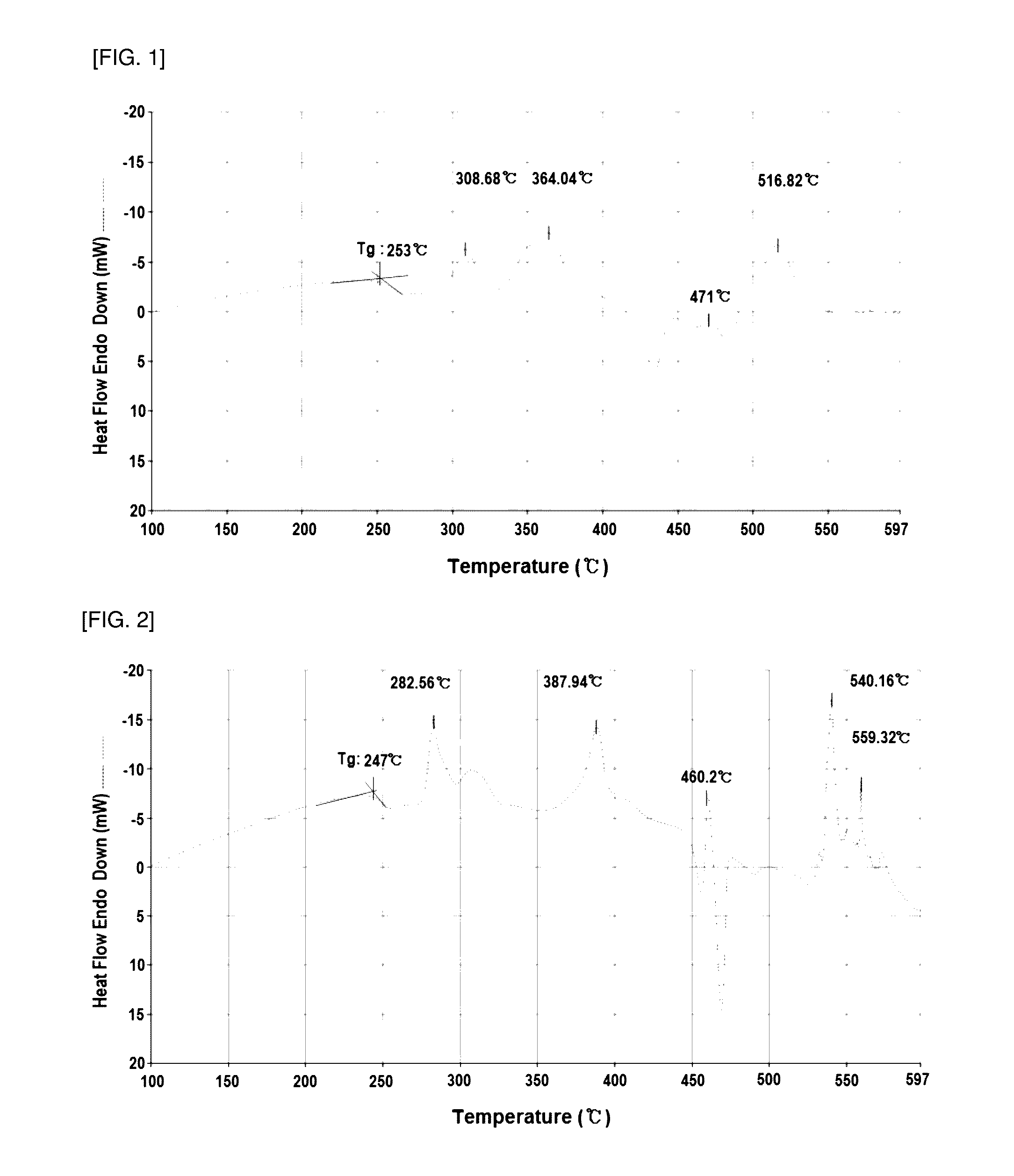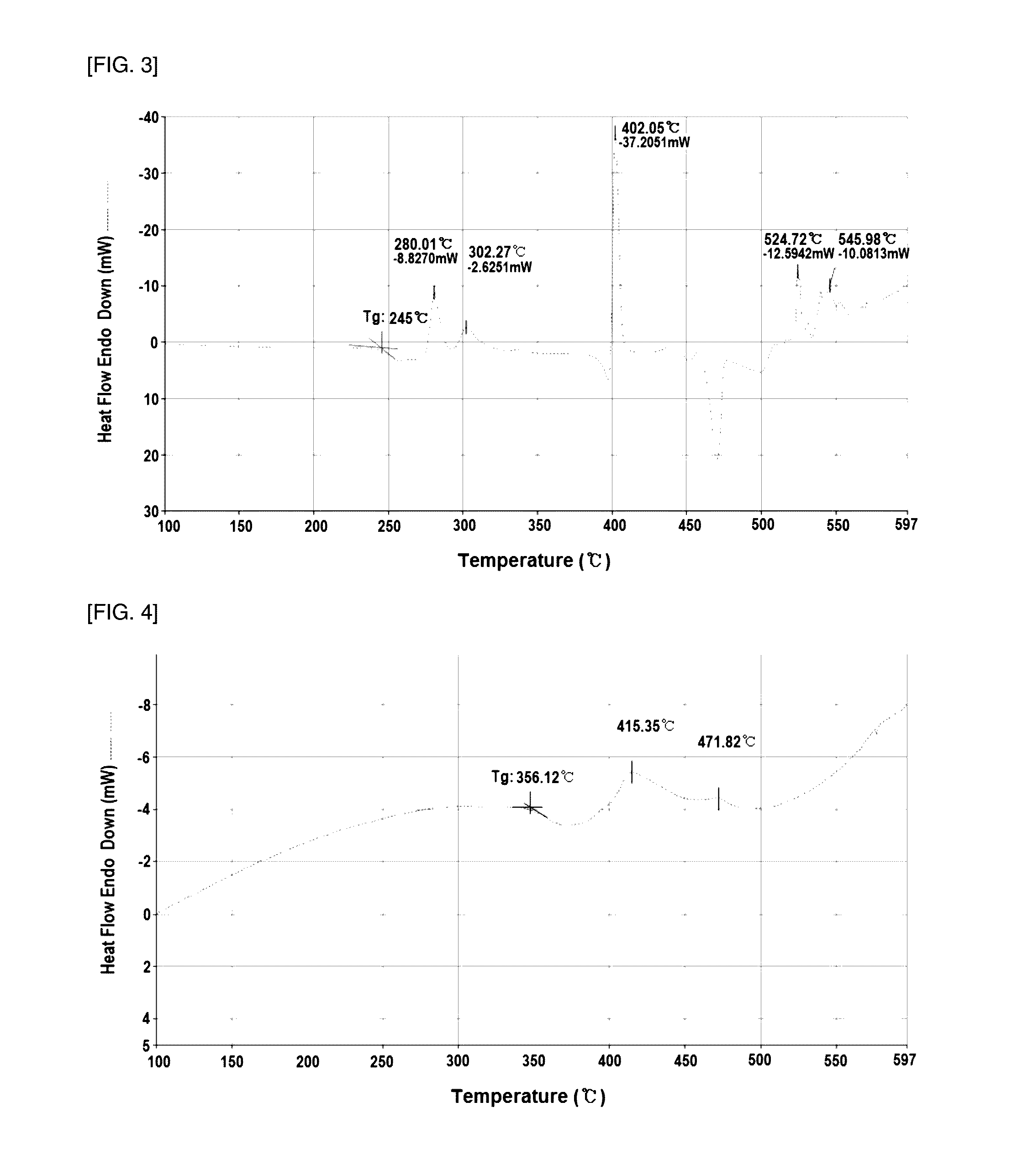Glass composition and electrode composition
- Summary
- Abstract
- Description
- Claims
- Application Information
AI Technical Summary
Benefits of technology
Problems solved by technology
Method used
Image
Examples
experimental example 1
[0067]With respect to the glass compositions of Examples 1 to 3 and Comparative Examples 1 and 2, glass transition temperature (Tg) and exothermic peaks were measured with a differential scanning calorimeter (DSC). The results are given in Table 4. Further, the results of differential scanning calorimetry of Examples 1 to 3 and Comparative Example 1 are given in FIGS. 1 to 4.
TABLE 4Compara-Compara-Exam-Exam-Exam-tive Ex-tive Ex-ple 1ple 2ple 3ample 1ample 2Glass transition254247245356436temperature (Tg)Exo-Peak 1308.6282.5281415530thermicPeak 2364387.9302471646temper-Peak 3471460.2402——aturePeak 4516.8540524——Peak 5—559———TotalTotal ofTotal ofTotal ofTotal ofTotal ofnumber4 peaks5 peaks4 peaks2 peaks2 peaksof peaks
experimental example 2
[0068]Solar cells were manufactured using conductive pastes of Example 9 and Comparative Example 6 according to a general method.
[0069]A silicon wafer for printing the electrode was a high sheet resistance cell having sheet resistance of 90Ω / □, and a paste for a Ag back electrode was printed on the silicon substrate, and then dried to form the Ag back electrode. Next, a paste for an Al back electrode was screen-printed to be overlapped with a part of the Ag back electrode, and then dried. Each paste was dried at a temperature of 170° C.
[0070]The pastes of the examples and comparative examples were printed on the entire surface of the silicon wafer by screen printing, followed by a drying process. In this regard, a mask for printing was 360-mesh having the entire thickness of 47 μm, and patterns were formed on the front electrode by using finger lines having a width of 40 μm and bus bar patterns having a width of 1.5 mm. After drying at 170° C., sintering was performed to manufacture...
PUM
| Property | Measurement | Unit |
|---|---|---|
| Temperature | aaaaa | aaaaa |
| Temperature | aaaaa | aaaaa |
| Percent by mass | aaaaa | aaaaa |
Abstract
Description
Claims
Application Information
 Login to View More
Login to View More - R&D
- Intellectual Property
- Life Sciences
- Materials
- Tech Scout
- Unparalleled Data Quality
- Higher Quality Content
- 60% Fewer Hallucinations
Browse by: Latest US Patents, China's latest patents, Technical Efficacy Thesaurus, Application Domain, Technology Topic, Popular Technical Reports.
© 2025 PatSnap. All rights reserved.Legal|Privacy policy|Modern Slavery Act Transparency Statement|Sitemap|About US| Contact US: help@patsnap.com



